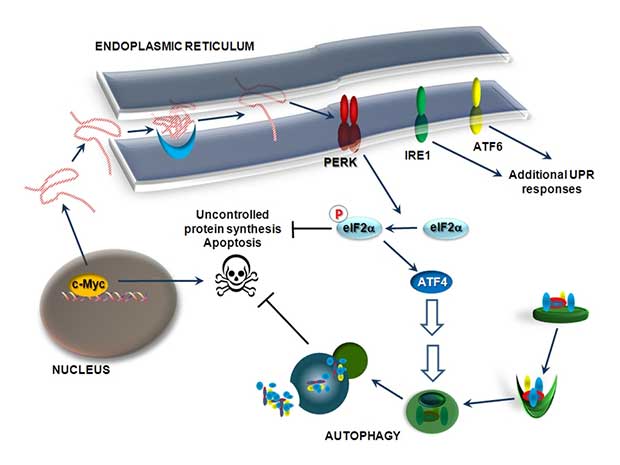
THUNDER BAY – Lymphoma is a cancer of the lymphocytes, a type of cell that forms part of the immune system. Typically, lymphoma is present as a solid tumor of lymphoid cells. Treatment might involve chemotherapy and in some cases radiotherapy and/or bone marrow transplantation, and can be curable depending on the histology, type, and stage of the disease. News that local MPP Michael Gravelle has been diagnosed with the disease has shocked many in Thunder Bay and across Ontario. There is ongoing research into solving the mysteries of cancer.
Research, led by Lori Hart, Ph.D., research associate and Constantinos Koumenis, Ph.D., associate professor,and research division director in the Department of Radiation Oncology, both from the Perelman School of Medicine, University of Pennsylvania, and Davide Ruggero, Ph.D., associate professor, Department of Urology, University of California, San Francisco, shows for the first time that the UPR is active in patients with human lymphomas and mice genetically bred to develop lymphomas. Importantly, when the UPR is inactivated, lymphoma cells readily undergo cell death. Their findings appear online in the Journal of Clinical Investigation and will appear in the December 2012 issue.
“The general implications of our work are that components of this pathway may be attractive anti-tumor targets, especially in lymphomas,” says Koumenis. “Indeed, an enzyme called PERK, a kinase that we found to play a central role in UPR, is already being targeted by several groups, in academia and pharmaceutical companies with specific inhibitors.”
The cancer-causing gene c-Myc paradoxically activates both cell proliferation and death. When the cell becomes cancerous, c-Myc–induced death is bypassed, promoting tumor formation. “A critical feature of c-Myc-overexpressing cells is an increased rate of protein synthesis that is essential for Myc’s ability to cause cancer,” says Tom Cunningham, Ph.D., a postdoctoral fellow in the Ruggero lab. “Myc tumor cells use this aberrant production of proteins to block apoptosis and activate the UPR. These cancer cells depend on Myc-induced increases in protein abundance to survive. Therefore, targeting protein synthesis downstream of Myc oncogenic activity may represent a promising new therapeutic window for cancer treatment,” adds Ruggero.
The accumulation of unfolded proteins in the endoplasmic reticulum, an inner cell component where newly made proteins are folded, initiates a stress program, the UPR, to support cell survival. Normally, UPR kicks in when there is an imbalance in the number of proteins that need to be folded and chaperones, specialized proteins that help fold them.
Analysis of mouse and human lymphomas demonstrated significantly higher levels of UPR activation compared with normal tissues. Using multiple genetic models, the two teams, in collaboration with additional labs in the US and Europe, demonstrated that Myc specifically activated one arm of the UPR, leading to increased cell survival by autophagy.
Autophagy is a survival pathway allowing a cell to recycle damaged proteins when it’s under stress and reuse the damaged parts to fuel further growth. Cancer cells might be addicted to autophagy, since this innate response may be a critical means by which the cells survive the nutrient limitation and lack of oxygen commonly found within tumors.
Inhibition of one protein, PERK, in the UPR arm studied, significantly reduced Myc-induced autophagy and tumor formation. What’s more, drug- or genetic-mediated inhibition of autophagy increased Myc-dependent cell death.
“Our findings establish a role for UPR as an enhancer of c-Myc–induced lymphomas and suggest that inhibiting UPR may be particularly effective against cancers characterized by c-Myc overexpression,” says Koumenis. “In this context the UPR essentially acts as one of the cell’s rheostats to counterbalance Myc’s runaway cell replication nature and its pro-cell-death tendencies.”
However, Koumenis indicates that further research is needed on the potential effects of PERK inhibition on normal tissues: “Although data from our lab and other groups suggest that PERK inhibition in tumors grown in animals is feasible, other studies suggest that PERK plays a critical role in the function of secretory tissues such as the pancreas. Carefully testing the effects of new PERK inhibitors in animal models of lymphoma and other malignancies in the next couple of years should address this question and could open the way for new clinical trials with such agents.”
Source: www.uphs.upenn.edu
